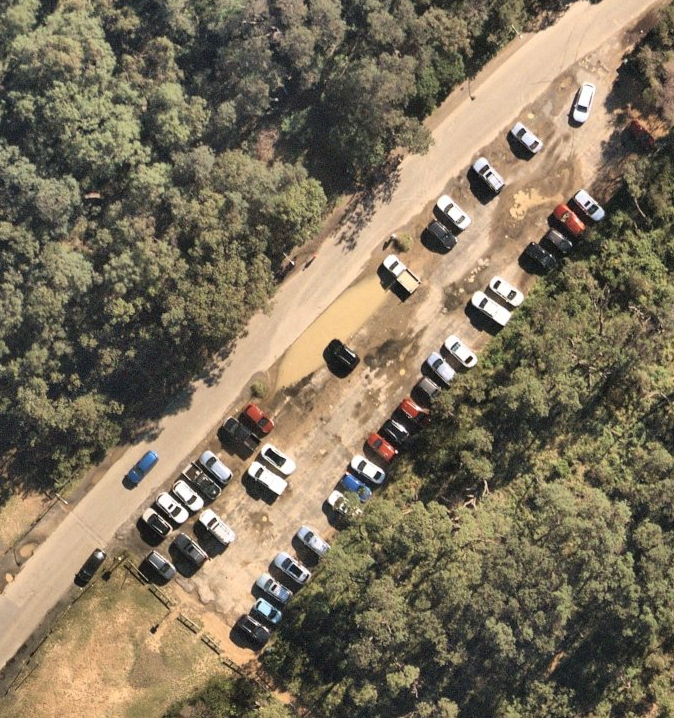Plans to remove sand dune vegetation at Umina Beach as part of the Peninsula Recreation Active Lifestyle Project have raised the ire of environmental groups, with Ettymalong Landcare Group labelling the move “flawed and invasive”.
The Community Environment Network (CEN) has also criticised the plan and called for more detailed environmental studies.
Ettymalong Creek Landcare spokesperson Bryan Ellis said the group was “astonished” that the community was being asked to consider such a “flawed and invasive plan in this time of climate emergency” and called on Council to do better.
The CEN has called on Council to take its obligations under the NSW Environmental Protection and Assessment Act (EPAA) seriously and complete a comprehensive Review of Environmental Factors (REF) before commencing any work.
The plan is to remove sand dune vegetation over a 3X80m area adjacent to Sydney Ave to make way for a carpark upgrade and the creation of a shared pathway as part of the larger project.
CEN Chair Gary Chestnut said the proposed work would result in the removal of the hind dune, associated trees, shrubs, ground cover and important habitat and reduce the resilience of the dune system which he said is already vulnerable to erosion and tidal inundation.
“This is an example of a project that does not appear to have given any consideration to the worsening impacts of sea level rise, nor to the environmental significance of the location for habitat, as a seed source, and as a buffer to an adjacent remnant of ecologically endangered Umina Coastal Sandplain Woodland (UCSW),” Chestnut said.
“This is also an example of a proposal to destroy dune and habitat that cannot be ‘offset’ as its environmental value is unique to its specific location.
“The proposed work must be assessed by a qualified coastal management expert.
“There should be both a flora and fauna assessment.
“The fauna assessment must determine if there are any impacts on local echidna, mammals, reptiles, invertebrates, and nesting birds.”
Chestnut said an REF should address clauses in the State Environmental Planning Policy (SEPP) outlining protections for “coastal vulnerability areas” and possible adverse impacts on the integrity and resilience of the biophysical, hydrological (surface and groundwater) and ecological environment, coastal environmental values and natural coastal processes.
These include marine vegetation, native vegetation and fauna and their habitats, undeveloped headlands and rock platforms.
“CEN hopes the Council accepts the community’s concerns about the integrity of the dunes at Umina Beach and carefully considers alternative solutions that enhance and improve the sustainability of the dunes,” he said.
But Council said the plan to revitalise the Umina Recreation Area, under a funding agreement with the Federal Government, followed extensive community consultation.
The Federal Government has provided $8.25M for the works, with Council chipping in an extra $530,000.
“The project was designed, after extensive community consultation, to meet growing community needs to provide a safe, user friendly, diverse and active precinct to suit all demographics and accessibility needs,” a Council spokesperson said.

“Included in the precinct are two new all access sporting amenity buildings, a regional level skate park with pump track, a BMX pump track, a shared pathway link through the recreation precinct, an upgrade to drainage to reduce road flooding and 50+ new formalised car parking spaces, including disabled parking.
“The project also includes upgrades to the Umina Tennis facility, cricket practice nets and other surrounding recreational infrastructure including park furniture, shelters, water stations, pathways and landscaping.”
The spokesperson said to complete the car park portion of the project five trees, including one dead one, needed to be removed.

Council has committed to replacing the removed trees with 16 new trees within the precinct.
“Council has worked closely with the Umina Community Group and users of the recreation precinct on the designs of the new facility and will continue to keep the community updated on progress,” the spokesperson said.
“Council staff recently met with (members of) the local Landcare group and listened to their concerns.
“Based on the issues raised, Council requested that the design consultant review the design to determine if it was possible to redesign the car park to avoid the need to remove the tress without substantial loss of parking space.
“This review identified that it was not possible to meet both of these competing objectives.
“For this reason Council will proceed with the current design and undertake dune restoration works including removal of non-native invasive ground cover that will be replaced with native trees and ground covers which will assist in mitigating future degradation of the existing dune.”
Terry Collins



